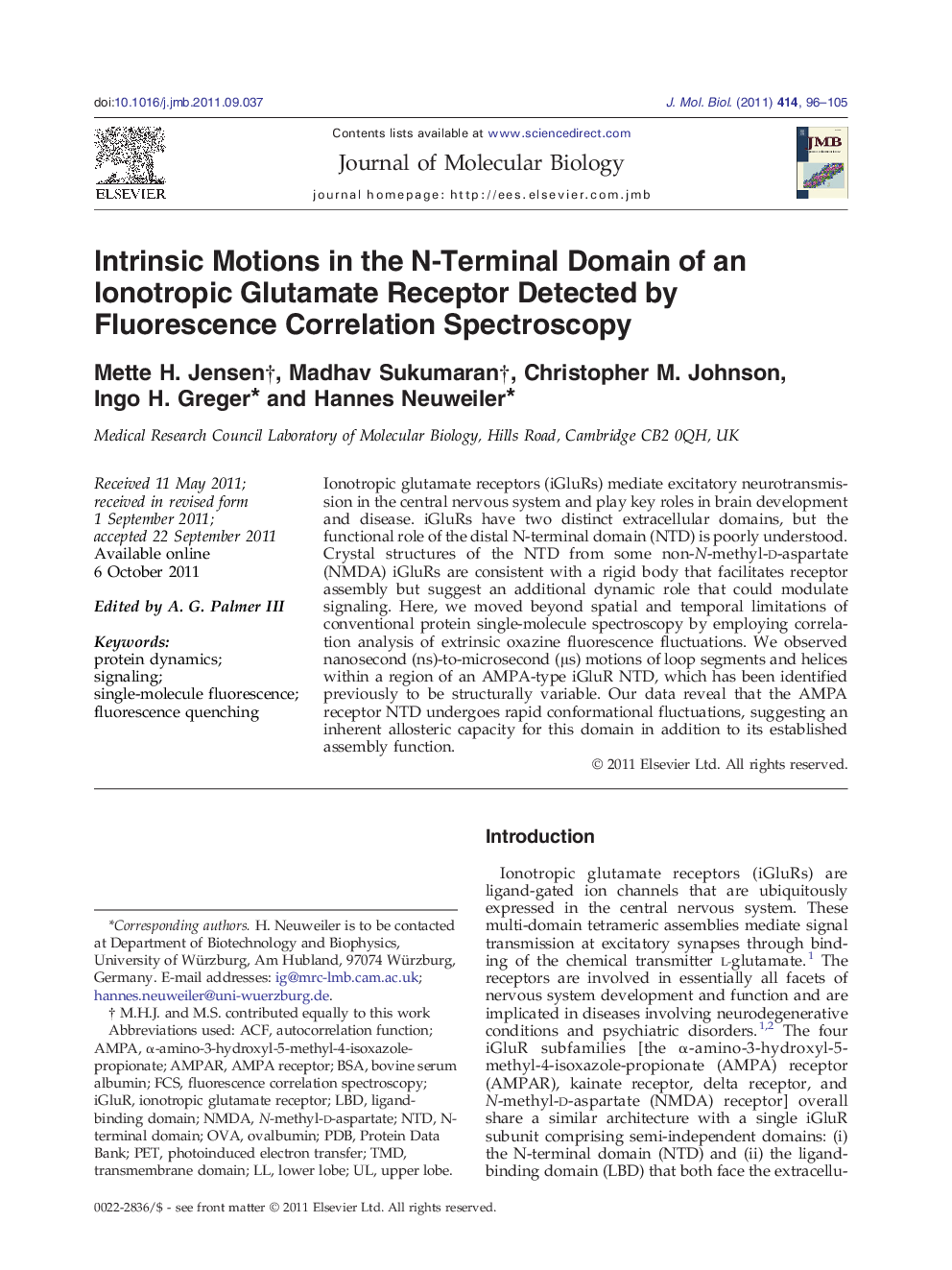| Article ID | Journal | Published Year | Pages | File Type |
|---|---|---|---|---|
| 2184723 | Journal of Molecular Biology | 2011 | 10 Pages |
Ionotropic glutamate receptors (iGluRs) mediate excitatory neurotransmission in the central nervous system and play key roles in brain development and disease. iGluRs have two distinct extracellular domains, but the functional role of the distal N-terminal domain (NTD) is poorly understood. Crystal structures of the NTD from some non-N-methyl-d-aspartate (NMDA) iGluRs are consistent with a rigid body that facilitates receptor assembly but suggest an additional dynamic role that could modulate signaling. Here, we moved beyond spatial and temporal limitations of conventional protein single-molecule spectroscopy by employing correlation analysis of extrinsic oxazine fluorescence fluctuations. We observed nanosecond (ns)-to-microsecond (μs) motions of loop segments and helices within a region of an AMPA-type iGluR NTD, which has been identified previously to be structurally variable. Our data reveal that the AMPA receptor NTD undergoes rapid conformational fluctuations, suggesting an inherent allosteric capacity for this domain in addition to its established assembly function.
Graphical AbstractFigure optionsDownload full-size imageDownload high-quality image (145 K)Download as PowerPoint slideHighlights► Motions within the NTD of an iGluR are uncovered. ► Fluorescence quenching of an extrinsic label probes local conformational changes. ► Single-molecule fluorescence fluctuations report nanosecond-to-microsecond kinetics of domain motions. ► Domain motions suggest capacity for allosteric function.
